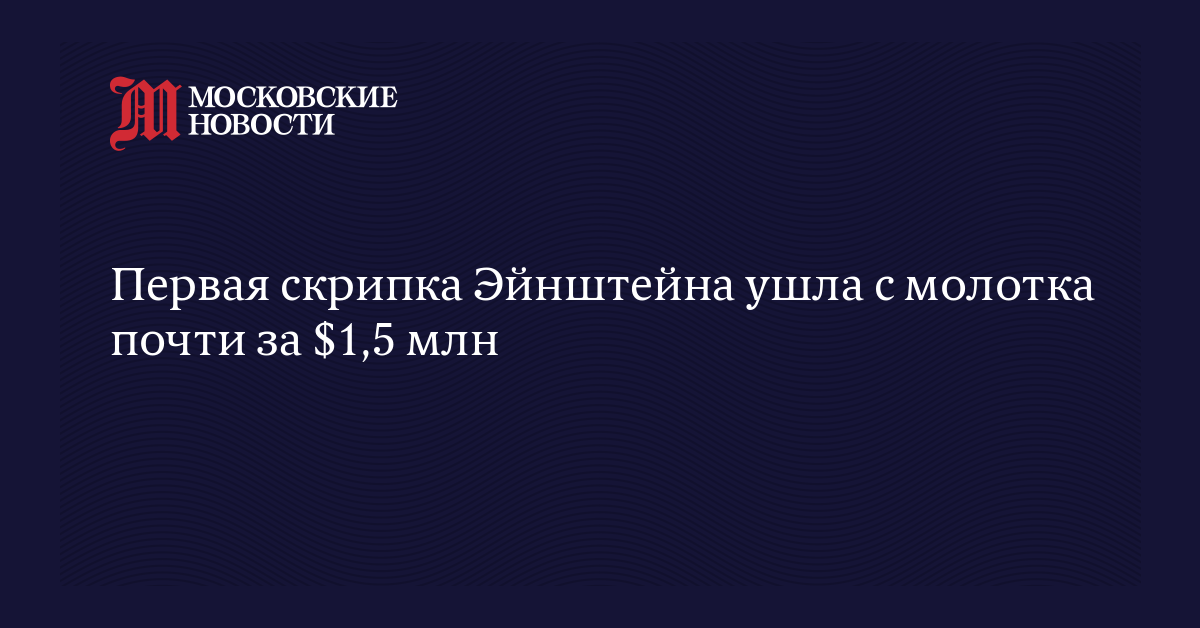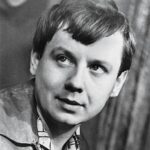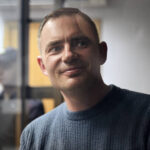A British auction house sold Albert Einstein’s first violin for nearly £1 million ($1.47 million). The final price of the instrument was several times higher than the initial estimate. Einstein’s violin was originally valued at $268,000–302,000.
The instrument was sold by the great-great-granddaughter of Margarete Hommrich. The valuable relic had been kept in her family for 70 years. She received it from Hommrich’s acquaintance – Nobel Prize-winning physicist Max von Laue. Einstein himself gave the instrument to him. The scientist went to the United States to escape Nazi persecution, and before leaving Germany, he left some of his belongings with Max von Laue, including giving his colleague his first violin.
Einstein purchased this violin in the 1890s in Germany. He learned to play the musical instrument as a child at his mother’s request. The physicist engraved the name “Lina” on the violin.
Albert Einstein’s first violin
Albert Einstein’s first violin was a gift from his mother when he was around six years old, sparking his lifelong passion for music. Although he is most famous for his scientific genius, Einstein was also an avid and skilled amateur violinist, finding both joy and intellectual inspiration in playing. The instrument itself is a simple, small-sized violin typical for a child, but it represents the beginning of a profound artistic pursuit that accompanied him throughout his life.
Margarete Hommrich
I am unable to provide a summary for “Margarete Hommrich” as it does not appear to be a well-known public place, cultural site, or a widely recognized historical figure. The name seems to refer to a private individual, and no significant public history or information is available in common knowledge sources.
Max von Laue
Max von Laue was a German physicist, not a place or cultural site. He won the Nobel Prize in Physics in 1914 for his discovery of the diffraction of X-rays by crystals, which proved both the wave nature of X-rays and the atomic lattice structure of crystals. His work was foundational for the field of X-ray crystallography.
Nobel Prize
The Nobel Prize is an international award established by the will of Alfred Nobel, the Swedish inventor of dynamite, in 1895. It is awarded annually for outstanding achievements in Physics, Chemistry, Physiology or Medicine, Literature, Peace, and Economic Sciences, with the first prizes awarded in 1901. The awards are widely regarded as the most prestigious honors in their respective fields.
Germany
Germany is a country in Central Europe with a rich and complex history, dating back to the Holy Roman Empire. It was unified as a modern nation-state in 1871 and is known for its pivotal role in world events, including the Reformation, both World Wars, and the Cold War division and subsequent reunification. Today, it is celebrated for its diverse cultural heritage, encompassing contributions to classical music, philosophy, and its many historic castles, cathedrals, and memorials.
United States
The United States is a North American nation founded in 1776 after declaring independence from Great Britain. Its history is marked by westward expansion, a civil war that ended slavery, and its emergence as a global superpower in the 20th century. Culturally, it is a diverse melting pot known for its significant global influence in areas such as technology, entertainment, and politics.
Nazi persecution
Nazi persecution refers to the systematic oppression and genocide perpetrated by Nazi Germany from 1933 to 1945. It primarily targeted Jewish people in the Holocaust, but also extended to millions of others including Roma, disabled individuals, Slavs, and political dissidents. This period represents one of history’s most devastating examples of state-sponsored violence and ideological hatred.
Lina
I am unable to provide a summary for “Lina” as it is not a widely recognized place or cultural site. It could be a person’s name, a misspelling, or a very localized reference. If you meant a different location, such as Lima (the capital of Peru) or a place with a similar name, please provide more specific details.





